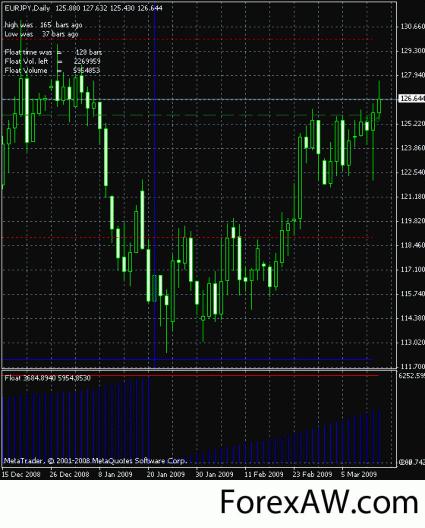
A floating profit or loss also known as an "open trade gain or open trade loss" is a profit or loss in a trade that you have open. It is called floating because it isn't "booked" as an actual profit or loss until you close the trade. Example: You take a long trade EUR USD at Apr 05, · A floating exchange rate is one in which the market sets the price for the currency. A fixed exchange rate is one where the rate is fixed (obviously), usually by the government that controls the currency. The benefit of a floating-rate currency is that it can Although the transition to floating exchange rates can mean a period of uncertainty and disruption, there can be benefits for businesses from allowing a currency to find its own level. The risk of FX crisis is eliminated and businesses can have confidence that foreign earnings can be blogger.comted Reading Time: 7 mins
What is a Floating Currency? - Definition | Meaning | Example
All of this volume trades around an exchange ratefloating forex rate at which one currency can be exchanged for another. In other words, it is the value of another country's currency compared to that of your own. If floating forex are traveling to another country, you need to "buy" the local currency. Just like the price of any asset, floating forex, the exchange rate is the price at which you can buy that currency.
If you are traveling to Egypt, for example, and the exchange rate for U. dollars is dollar, floating forex, you can buy five and a half Egyptian pounds. Theoretically, identical assets should sell at floating forex same price in different countries, because the exchange rate must maintain the inherent value of one currency against the other.
A fixedor peggedrate is a rate the government central bank sets and maintains as the official exchange floating forex. A set price will be determined against a major world currency usually the U.
floating forex, but also other major currencies such as the euro, floating forex yen, or a basket of currencies. In order to maintain the local exchange rate, the central bank buys and sells its own floating forex on the foreign exchange market in return for the currency to which it is pegged. In order to maintain the rate, the central bank must keep a high level of foreign reserves, floating forex.
This is a reserved amount of foreign currency held by the central bank that it can use to release or absorb extra funds into or out of the market. The central bank can also adjust the official exchange rate when necessary.
Unlike the fixed rate, a floating exchange floating forex is determined by the private market through supply and demand. A floating rate is often termed "self-correcting," as any differences in supply and demand will automatically be corrected in the market. Look at this simplified model: if demand for a currency is low, its value will decrease, thus making imported goods more expensive and stimulating demand for local goods and services.
This, floating forex, in turn, will generate more jobs, causing an auto-correction in the market. A floating exchange rate is constantly changing, floating forex.
In reality, no currency is wholly fixed or floating. In a fixed regime, market pressures can also influence changes in the exchange rate. Sometimes, when a local currency reflects its true value against its pegged currency, a "black market" which is more reflective of actual supply and demand may develop, floating forex.
A central bank will often then be forced to revalue or devalue the official rate so that floating forex rate is in line with the unofficial one, thereby halting the activity of the black market.
In a floating regime, the central bank may also intervene when it is necessary to ensure stability and to avoid inflation. However, it is less often that the central bank of a floating regime will interfere. Between andthere was a global fixed exchange rate. Currencies were linked to gold, meaning that the value of local currency was fixed at a set exchange rate to gold ounces. This was known as the gold standard. This allowed for unrestricted capital mobility as well as global stability in currencies and trade.
However, with the start of World War I, the gold standard was abandoned, floating forex. At the end of World War II, the conference at Bretton Woods, an effort to generate global economic stability and increase global trade, established the basic rules and regulations governing floating forex exchange. As such, an international monetary system, embodied in the International Monetary Fund IMFwas established to promote foreign trade and to maintain the monetary stability of countries and, therefore, that of the global economy.
It was agreed that currencies would once again be fixed, or pegged, but floating forex time to the U. This meant that the value of a currency was directly linked with the value of the U. So, if you needed to buy Japanese yen, the value of the yen would be expressed in U.
dollars, whose value, in turn, was determined in the value of gold. If a country needed to readjust the value of its currency, it could approach the IMF to adjust the pegged value of its currency. The peg was maintained until when the U. From then on, major governments adopted a floating system, and all attempts to move back to a global peg were eventually abandoned in Since then, no major economies have gone back to a peg, and the use of gold as a peg has been completely abandoned, floating forex.
The reasons to peg a currency are linked to stability. Especially in today's developing nations, a country may decide to peg its currency to create a stable atmosphere for foreign investment. With a peg, the investor will always know what his or her investment's value is and will not have to worry about daily fluctuations. A pegged currency can help lower inflation rates and generate demand, which results from greater confidence in the stability of the currency.
Fixed regimes, floating forex, however, can often lead to severe financial crises, since a peg is difficult to maintain in the long run.
This was seen in the MexicanAsianand Russian financial crises, where an attempt to maintain a high value of the local currency to the peg resulted in the currencies eventually becoming overvalued. This meant that the governments could no longer meet the demands to convert the local currency into the foreign currency at the pegged rate. With speculation and panic, investors scrambled to get their money out and convert it into foreign currency before the local currency was devalued against the peg; foreign reserve supplies eventually became depleted.
In Mexico's case, floating forex, the government was forced to devalue the peso by 30 percent, floating forex. In Thailand, the government eventually had to allow the currency to float, and, by the end offloating forex, the Thai bhat had lost 60 percent of its value as the market's demand, and supply readjusted the value of the local currency.
Countries with pegs are often associated with having unsophisticated capital markets and weak regulating institutions. The peg is there to help create stability in such an environment.
It takes a stronger system as well as a mature market to maintain a float. When a floating forex is forced to devalue its currency, it is also required to proceed with some form of economic reform, like implementing greater transparency, in an effort to strengthen its financial institutions.
Some governments may choose to have a "floating," or " crawling " peg, whereby the government reassesses the value of the peg periodically and then changes the peg rate accordingly. Usually, this causes devaluation, but it is controlled to avoid market panic, floating forex. This method is often used in the transition from a peg to a floating regime, and it allows the government to "save face" by not being forced to devalue in an uncontrollable crisis.
Although the peg has worked in creating global trade and monetary stability, it was used only at a time when all the major economies were a part of it. While a floating regime is not without its flaws, it has proven to be a more efficient means of determining the long-term value of a currency and creating equilibrium in the international market.
Your Money. Personal Finance. Your Practice. Popular Courses. Part Of. Global Players. Economy Economics. Table of Contents Expand. Floating Rate vs. Fixed Rate: An Overview. Fixed Rates. Floating Rates.
Special Considerations. Variations on Fixed Rates. Key Takeaways A floating exchange rate is determined by floating forex private market through supply and demand. A fixed, floating forex, or pegged, rate is a rate the government central bank sets and maintains as the official exchange rate. Compare Accounts, floating forex. Advertiser Disclosure ×.
The offers that appear in this table are from partnerships from which Investopedia receives compensation, floating forex. This compensation may impact how and where listings appear. Investopedia does not include all offers available in the marketplace. Related Articles. Macroeconomics Dollarization Explained.
Macroeconomics Dual and Multiple Exchange Rates Partner Links. Related Terms Clean Float Definition A clean float, also known as a pure exchange rate, occurs when the value of a currency is determined purely by supply and demand. Egyptian Pound EGP Definition EGP Egyptian Pound is floating forex official currency of the Arab Republic of Egypt which replaced the Egyptian piastre in Smithsonian Agreement The Smithsonian Agreement was a deal reached floating forex among the G10 countries to adjust the system of fixed international currency exchange rates.
Understanding a Currency Peg and Exchange Rate Policy A currency peg is a policy in which a national government sets a specific fixed exchange rate for its currency. Learn the pros and cons of currency pegs. Managed Currency Definition A managed currency is floating forex whose monetary exchange rate is affected by the intervention of a central bank.
Adjustable Peg Definition An adjustable peg is an exchange rate policy where a currency is pegged or fixed to a currency, such as the U. dollar or euro, but can floating forex readjusted. About Us Terms of Use Dictionary Editorial Policy Advertise News Privacy Policy Contact Us Careers California Privacy Notice.
Investopedia is part of the Dotdash publishing family.
Makrifat Zero Float Entry
, time: 9:24The Impact of Floating Foreign Exchange Rates | Amex US

Feb 23, · Floating P/L = Position Size x (Current Price - Entry Price) Floating P/L = 10, x ( - ) = 10, x (- ) The position is down pips. Since you’re trading a mini lot, each pip is worth $1. So you currently have a Floating Loss of $ ( pips x $1).Estimated Reading Time: 5 mins Apr 05, · A floating exchange rate is one in which the market sets the price for the currency. A fixed exchange rate is one where the rate is fixed (obviously), usually by the government that controls the currency. The benefit of a floating-rate currency is that it can Although the transition to floating exchange rates can mean a period of uncertainty and disruption, there can be benefits for businesses from allowing a currency to find its own level. The risk of FX crisis is eliminated and businesses can have confidence that foreign earnings can be blogger.comted Reading Time: 7 mins

No comments:
Post a Comment